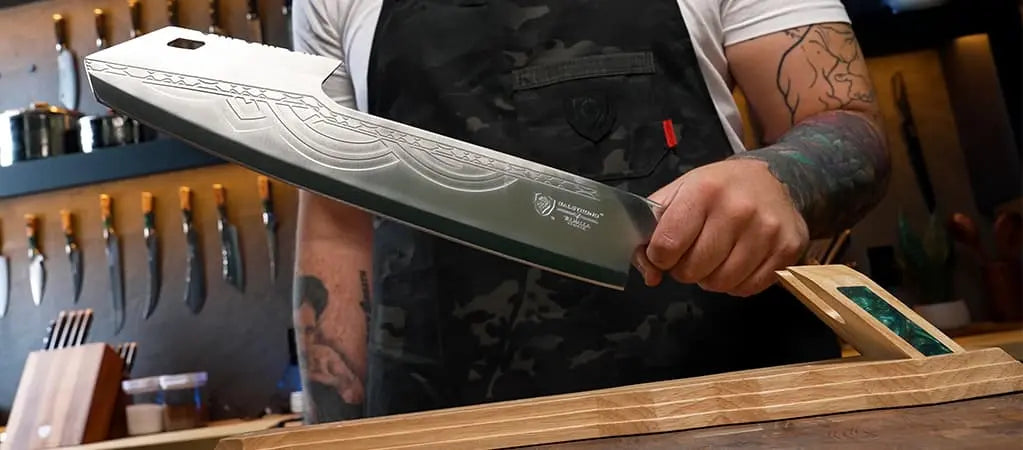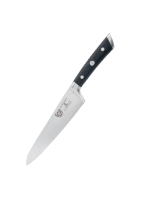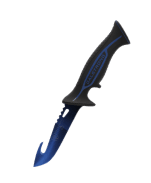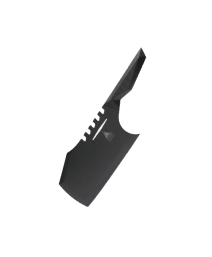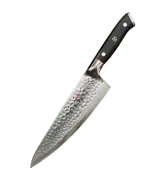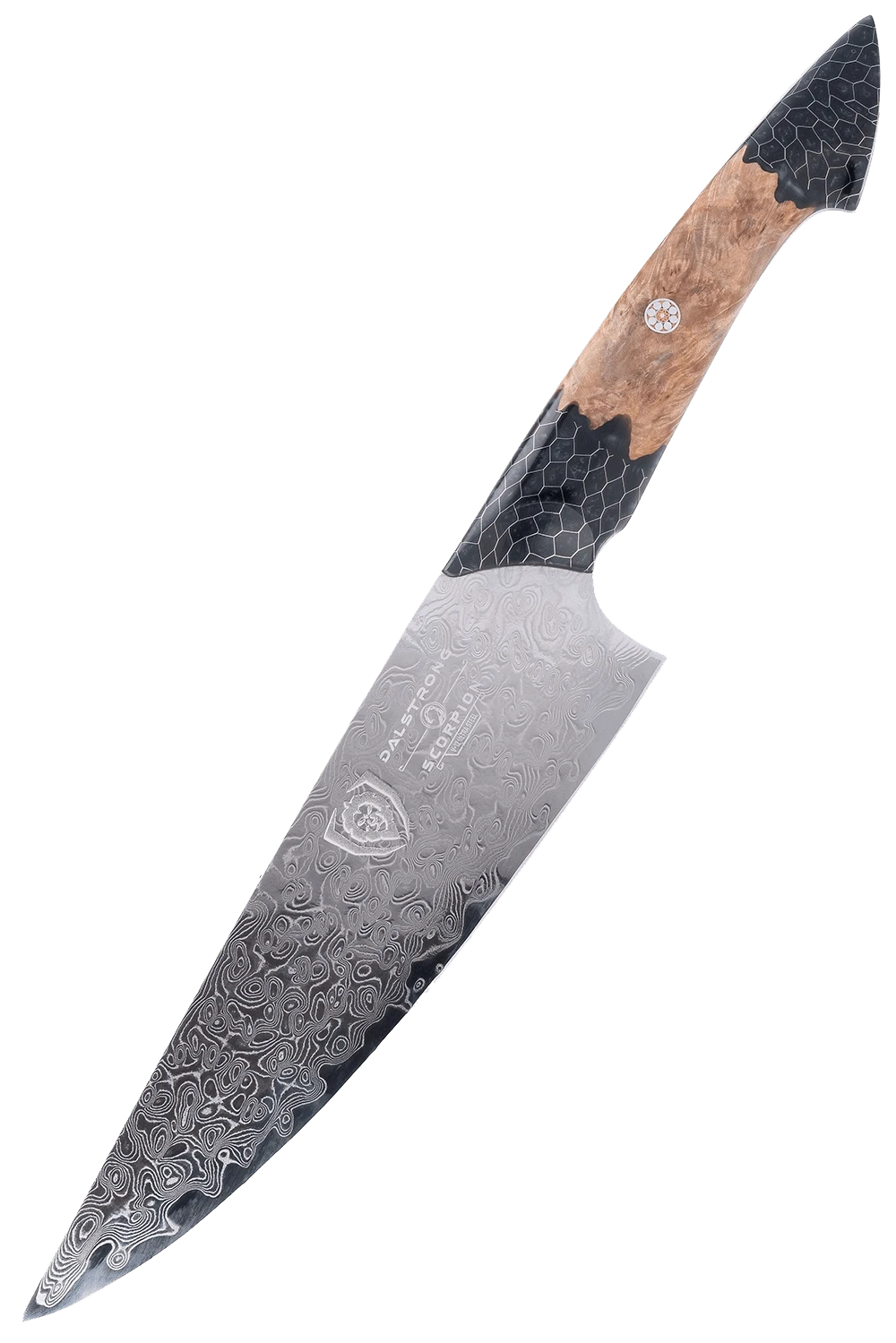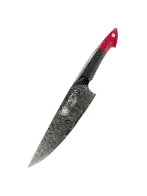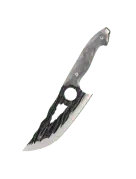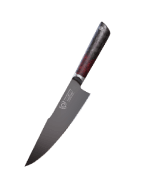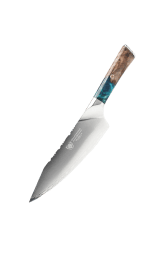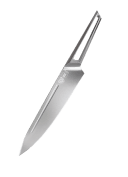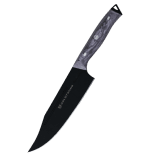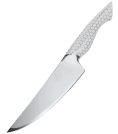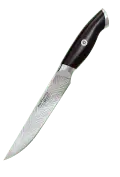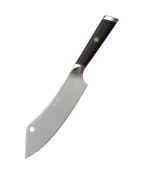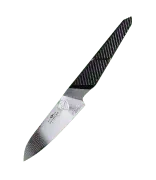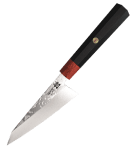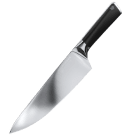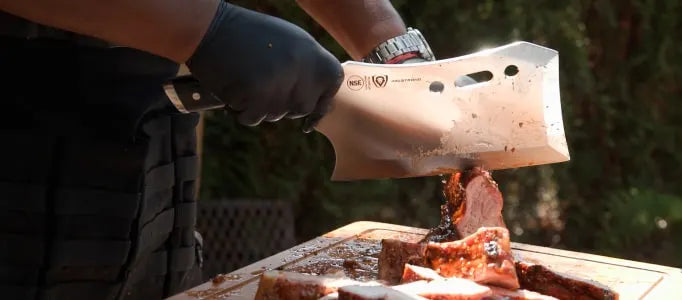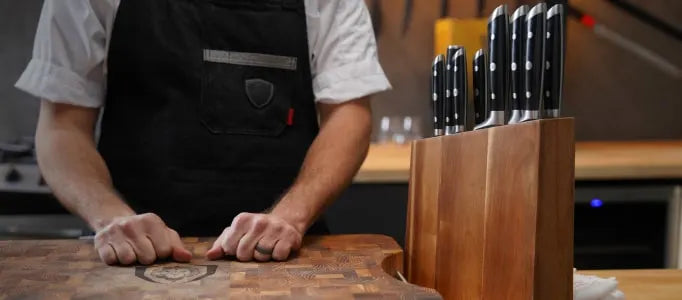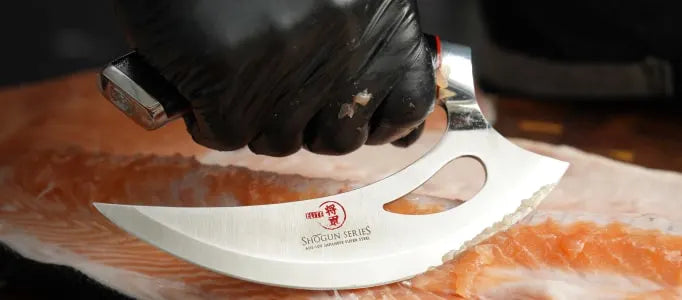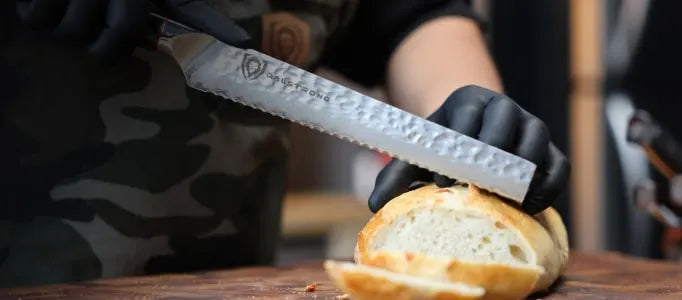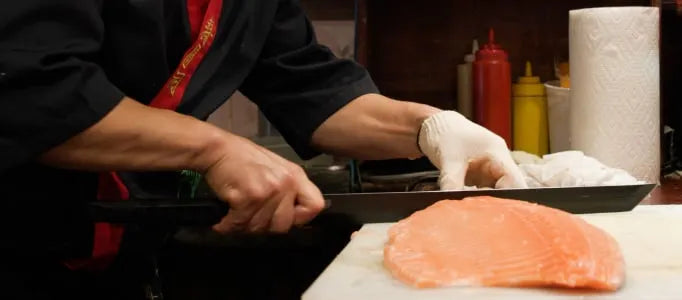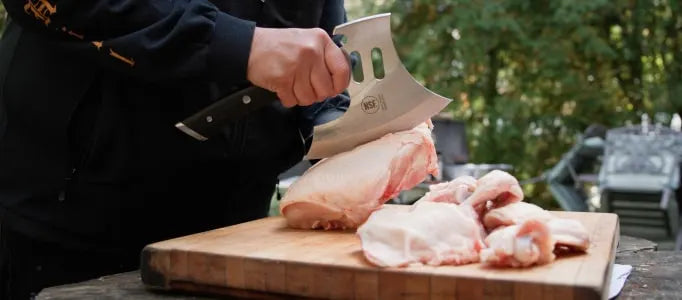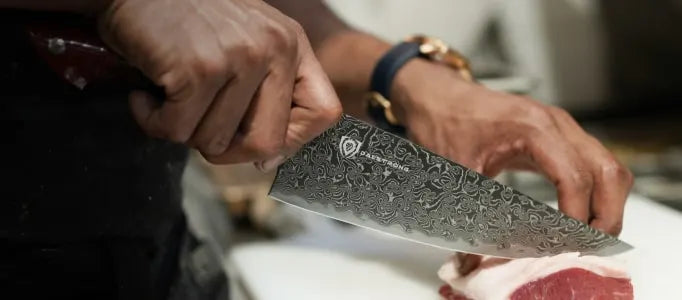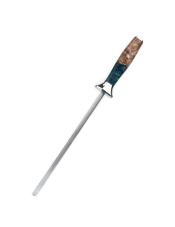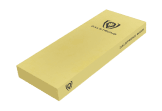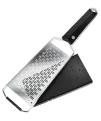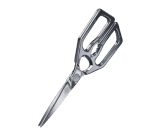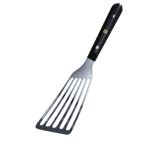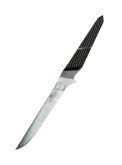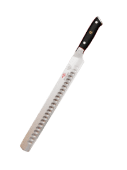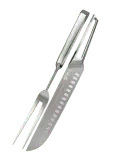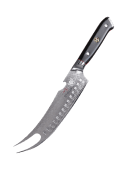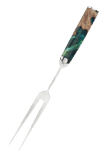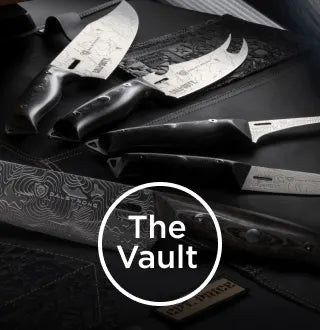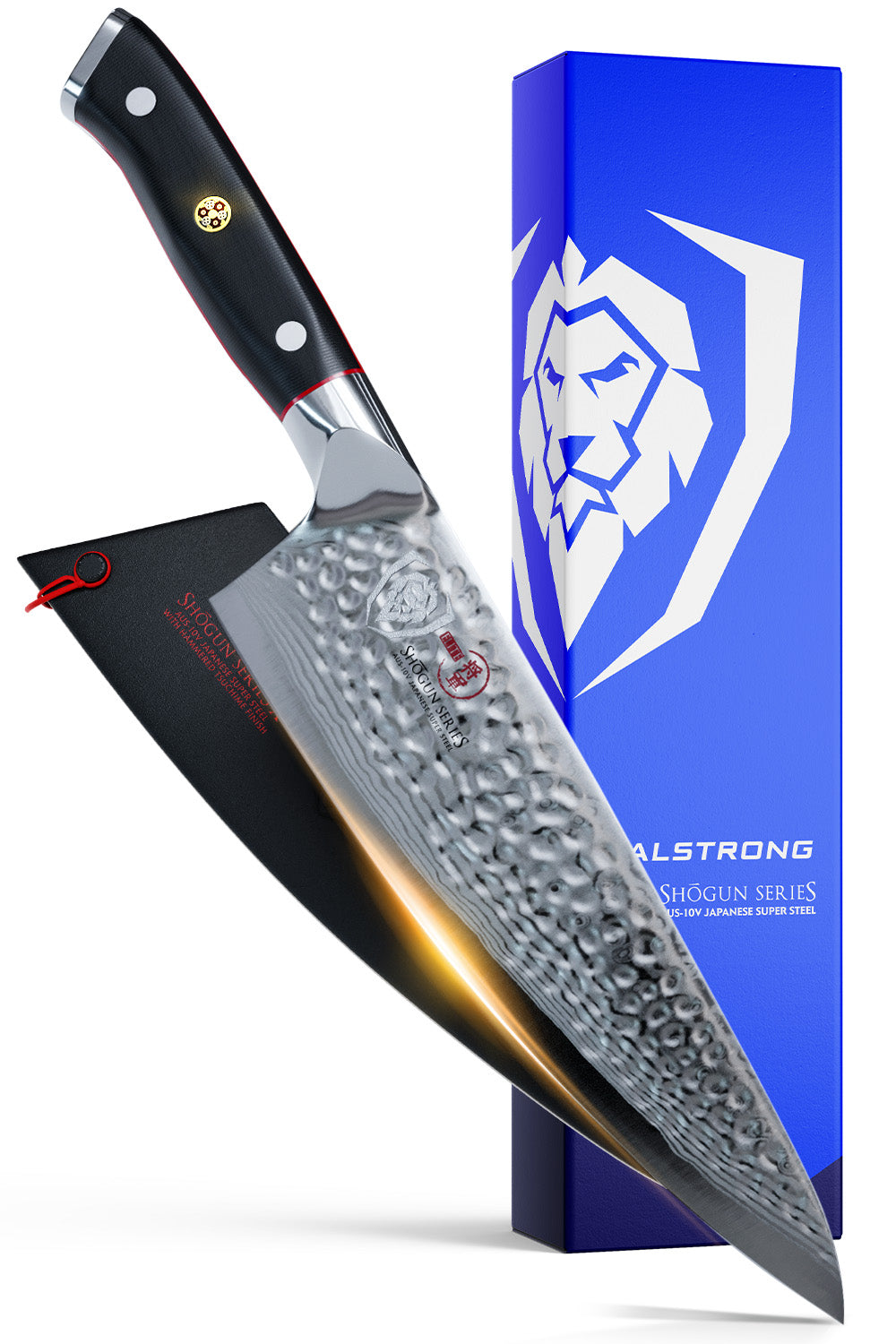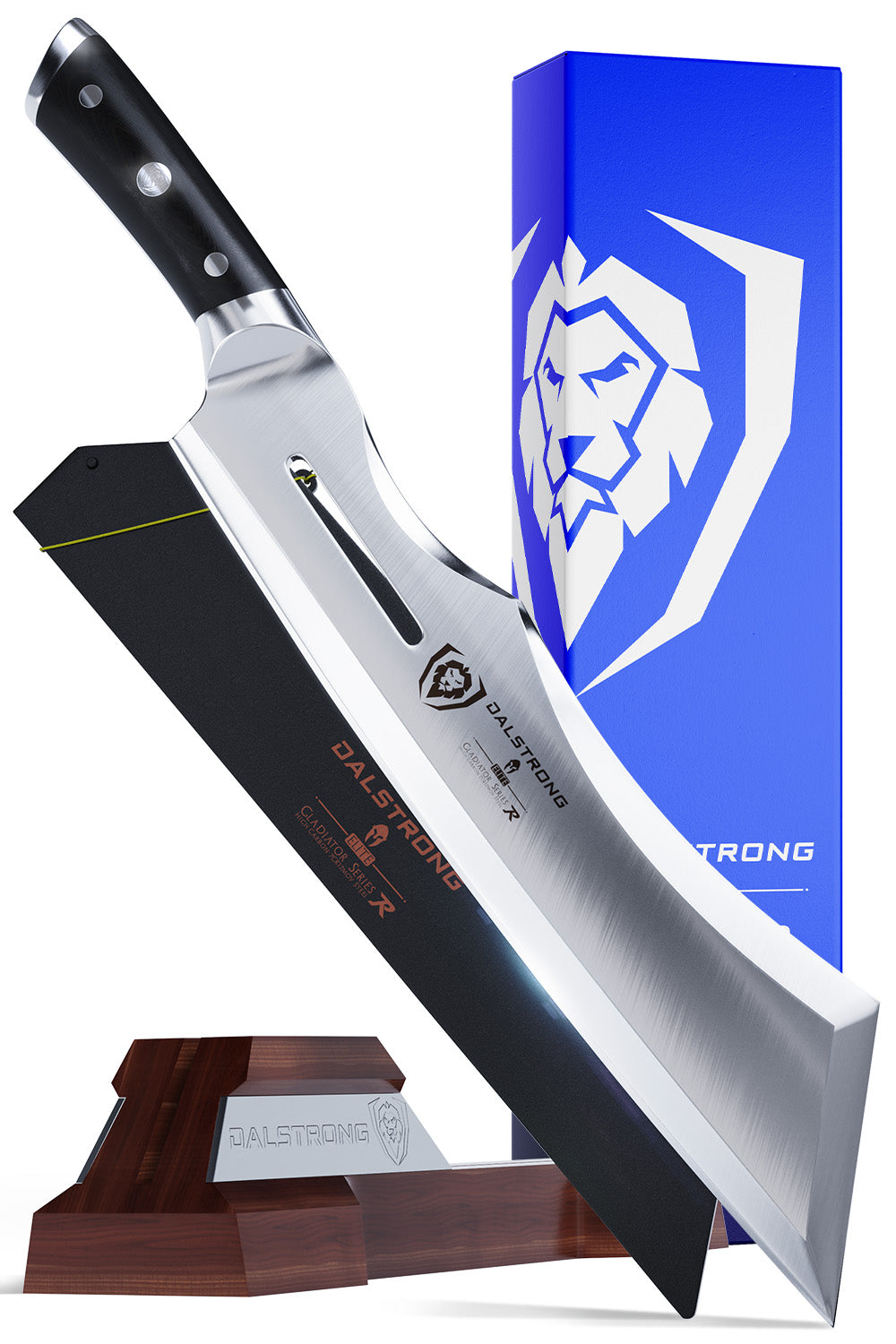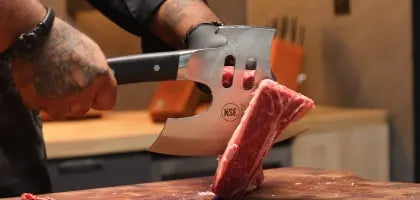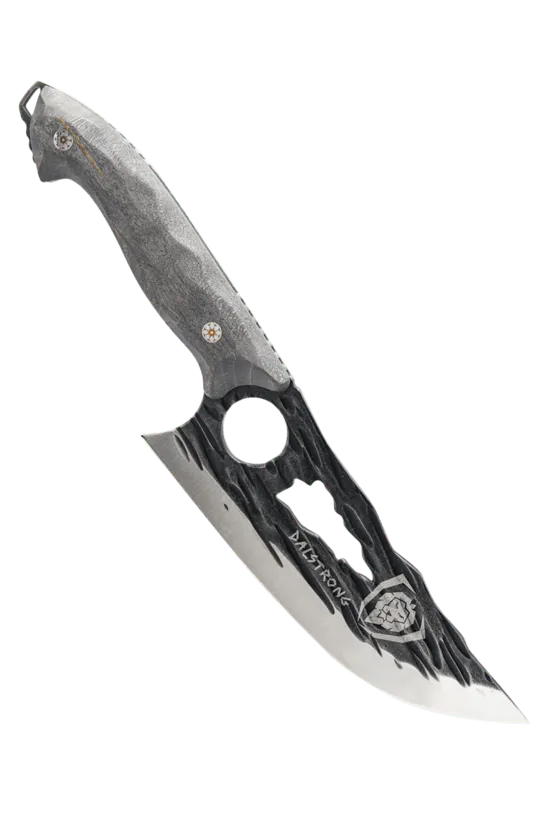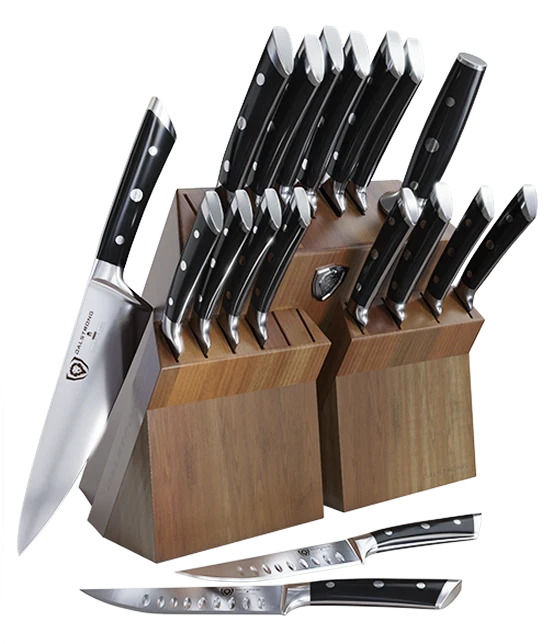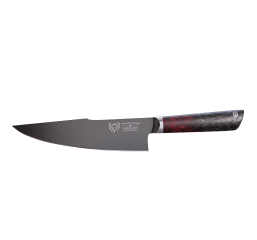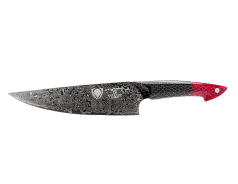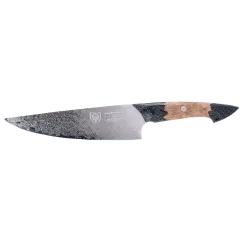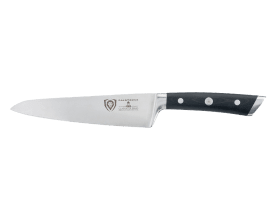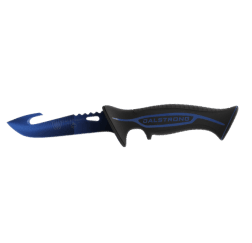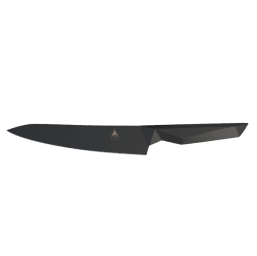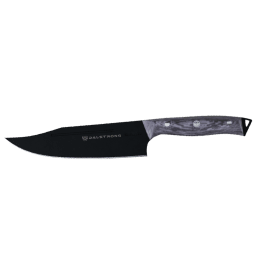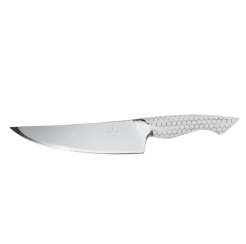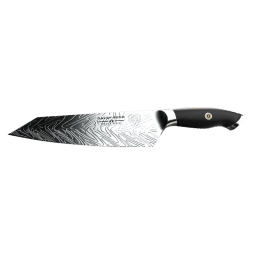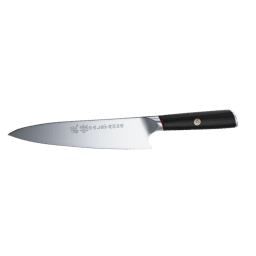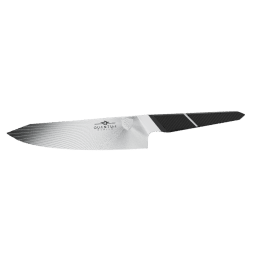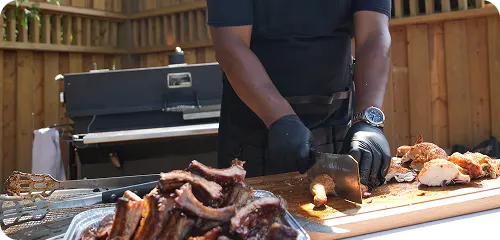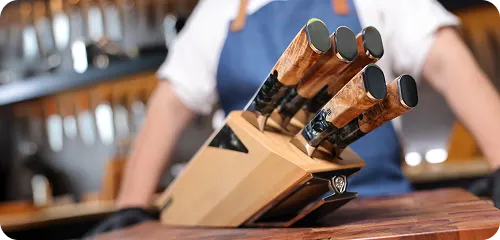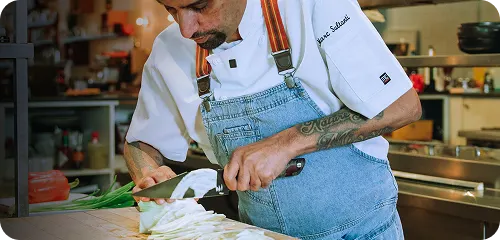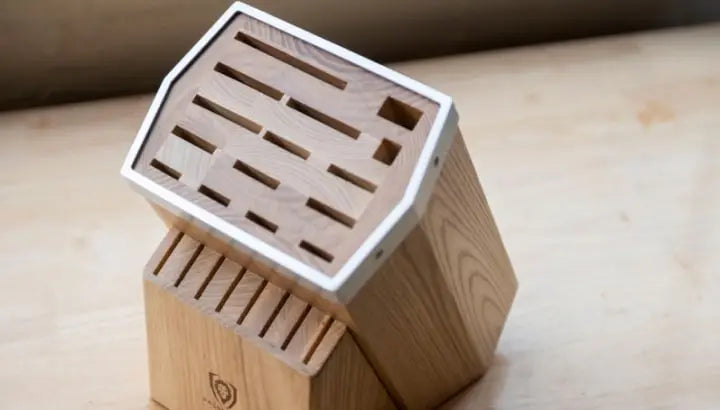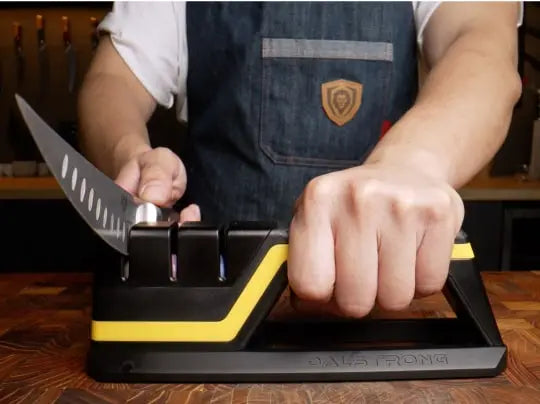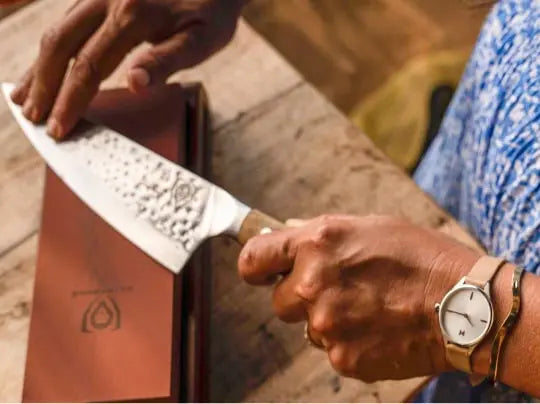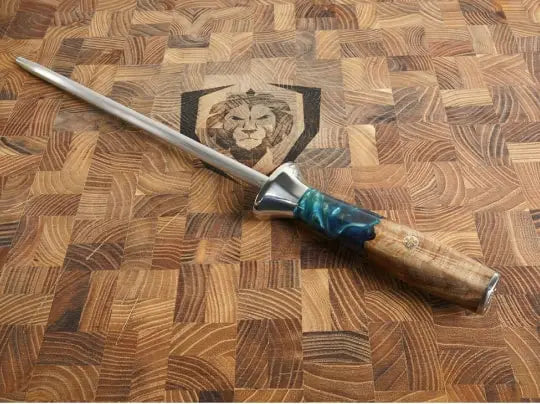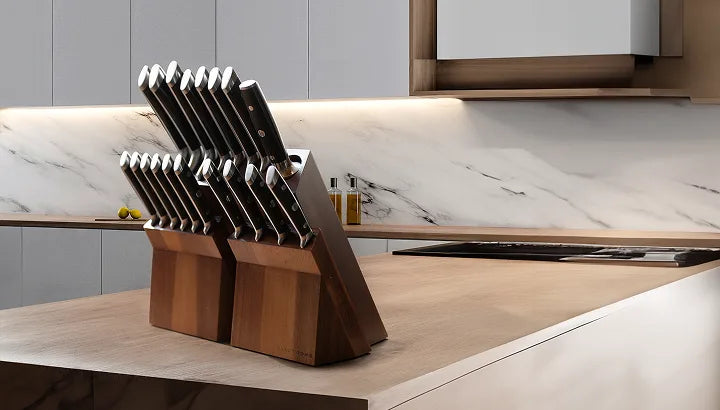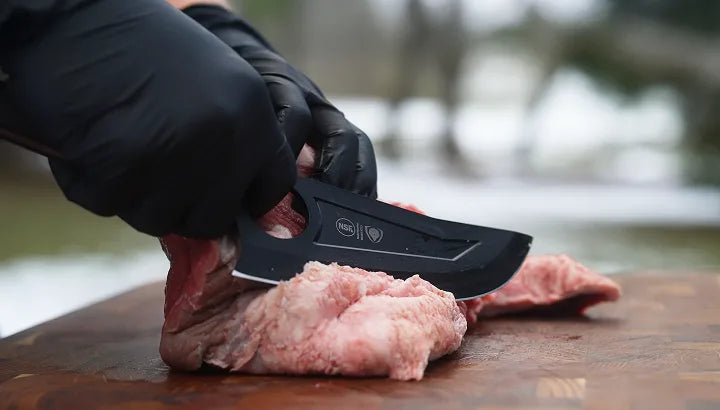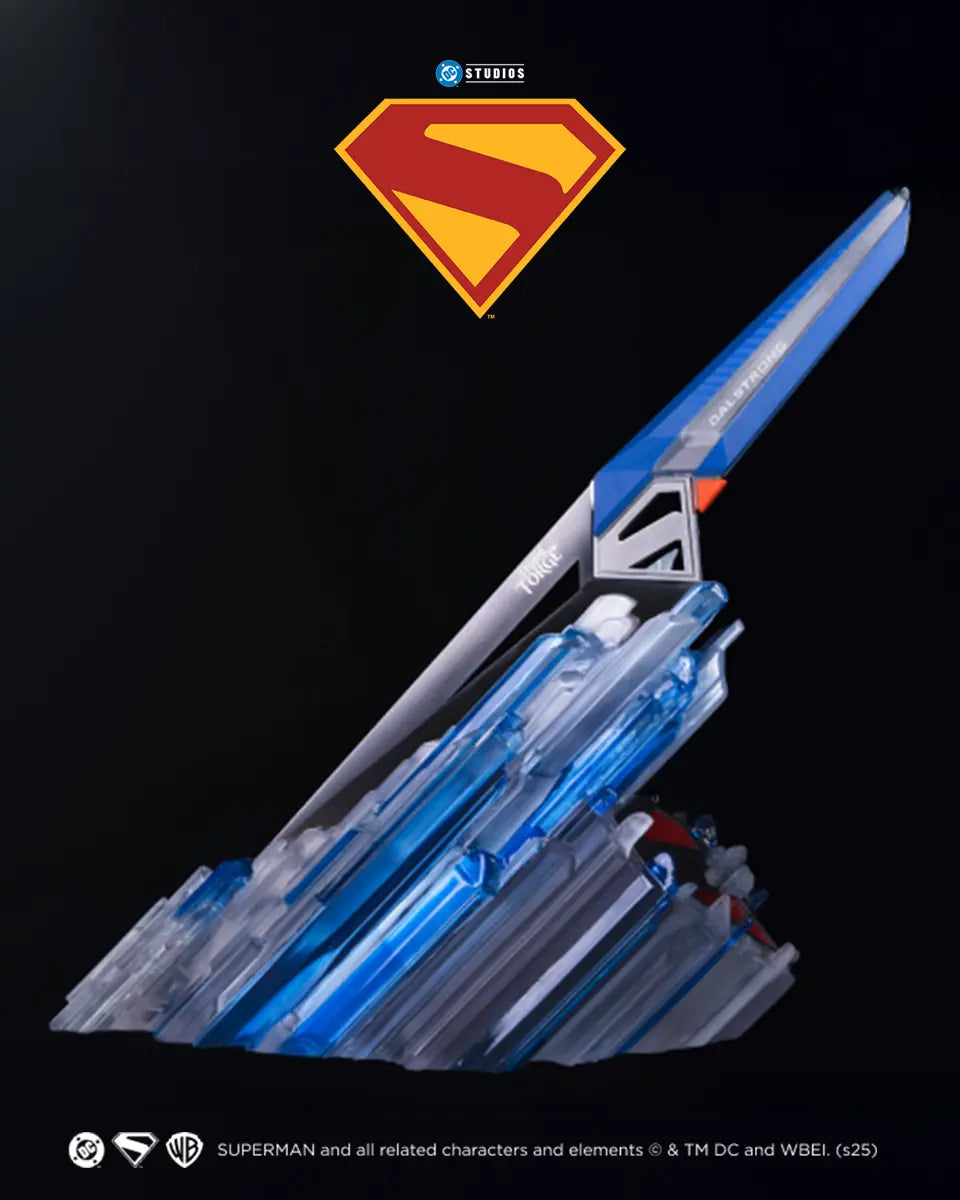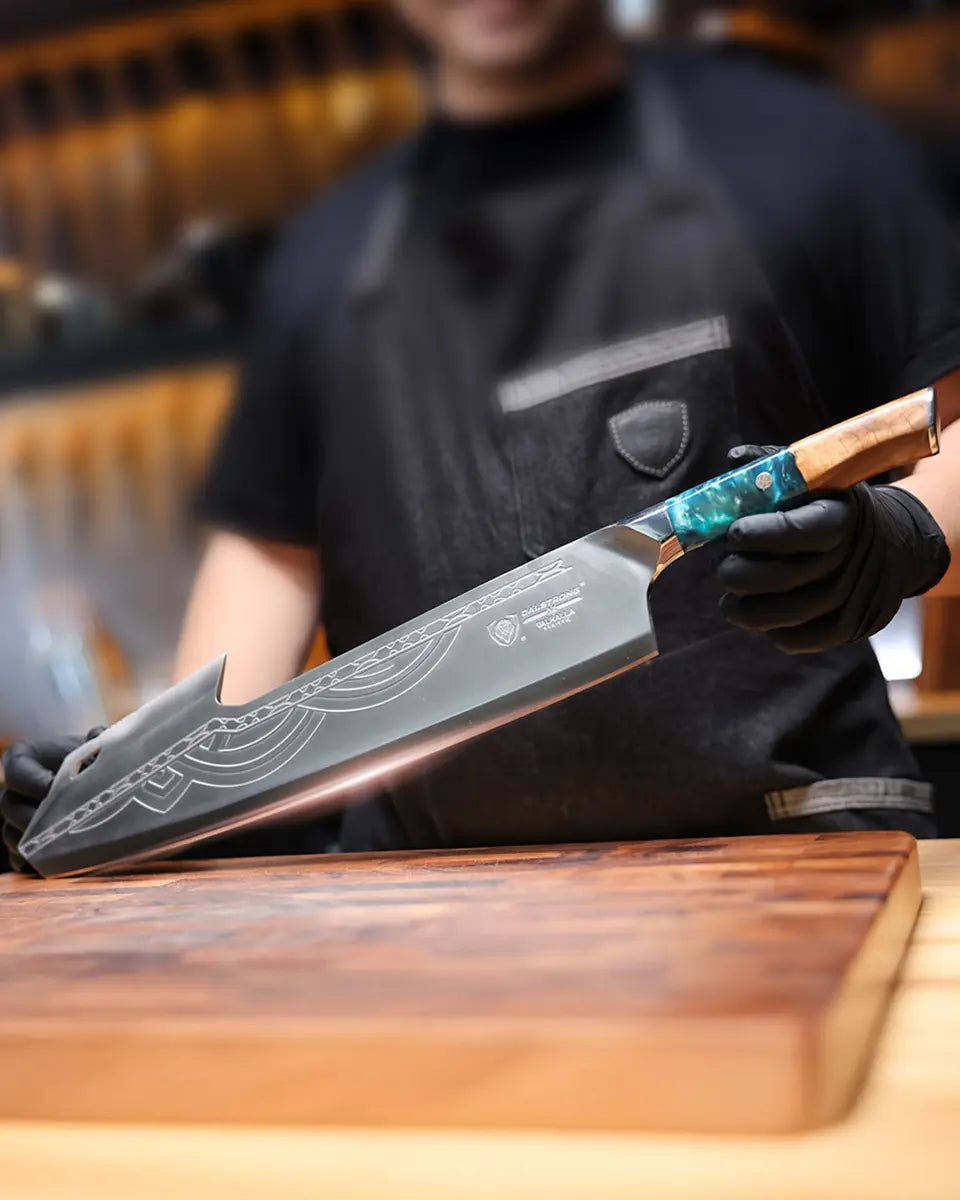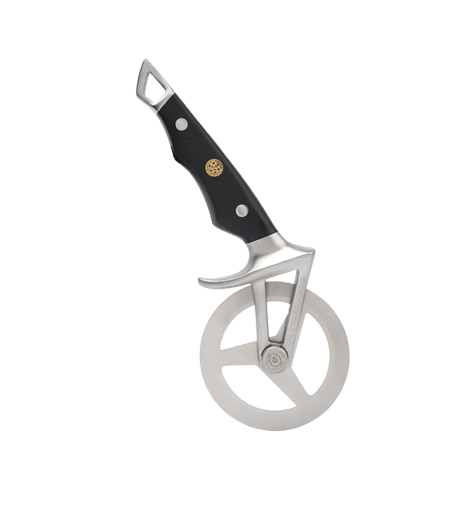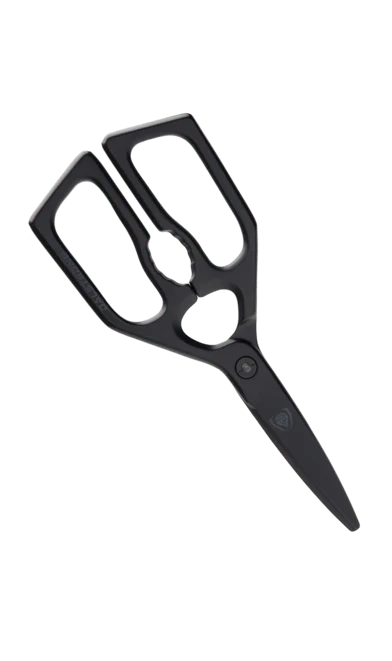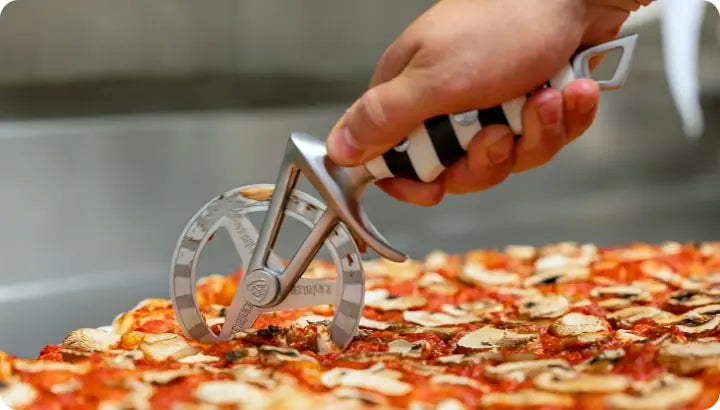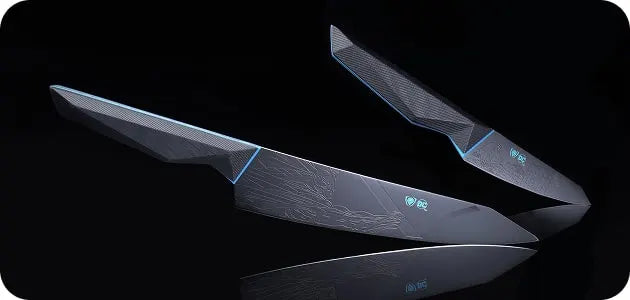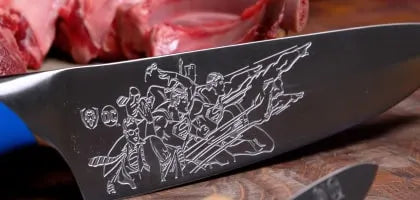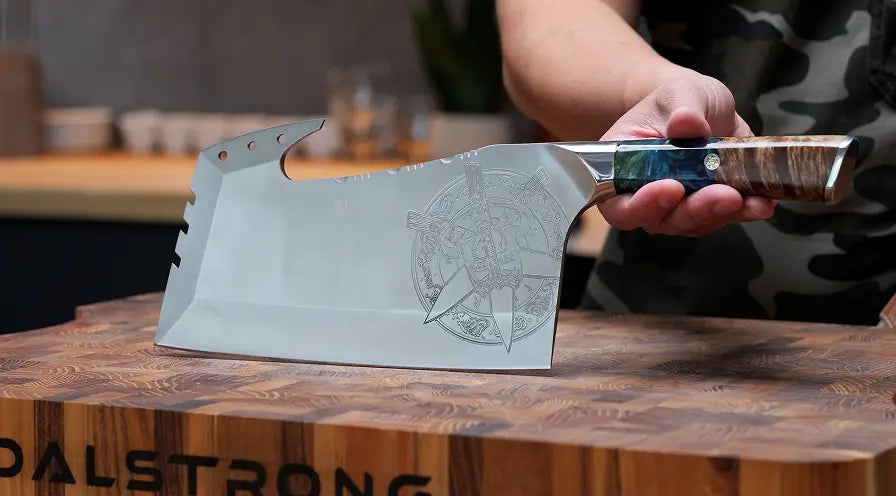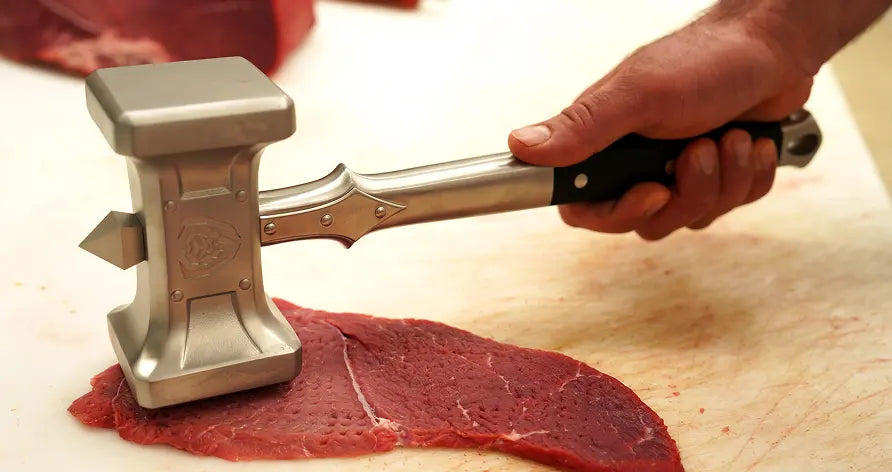 Spartan Ghost Series Santoku Knife 7"
Spartan Ghost Series Santoku Knife 7"
If you're slicing, dicing, or just plain chopping, you're in the right place.
1. Why It's Important To Know Different Knife Cuts
 Spartan Ghost Series Santoku Knife 7"
Spartan Ghost Series Santoku Knife 7"
If you’ve ever tried to follow a recipe that calls for a “medium dice” or a “fine julienne” and thought, Is that even English?, you’re not alone. But here’s the thing—understanding knife cuts isn’t just some fancy lingo thrown at you by culinary school graduates to make home cooks feel out of their league. It’s actually a practical skill that can elevate your cooking, whether you're whipping up a simple weeknight dinner or impressing guests with your food prep precision.
Knife cuts are the editing tools of your kitchen
Here’s the analogy I like to think of: knife cuts are like the editing cuts in a great film. You know how in a movie, an invisible cut or a perfectly timed jump cut can make the story feel smooth and seamless? It’s the same with knife skills in the kitchen. Just like the best film editing software can transform raw footage into something special, the way you chop, dice, or slice your ingredients makes all the difference in how your dish comes together.
So you’re chopping up a bunch of vegetables for a stew, but the dice measures are all over the place. Some pieces are massive chunks, others are barely hanging on by a thread. When those veggies hit the pot, guess what happens? Some of them cook perfectly, while others are either burnt to a crisp or still rock solid. It's like trying to watch a movie with weird, uneven cuts—your brain knows something’s off, even if you can’t quite put your finger on it.
Uniform cuts are the secret to even cooking
In contrast, when you master your knife techniques and create those uniform pieces, everything cooks evenly. Your flavors develop in harmony, and you don’t have to worry about biting into a half-raw potato while the carrots dissolve into mush. It’s all about balance and control—just like in a well-edited film.
The best part is you don’t need to be a professional chef to start developing your knife skills. Think of it as a form of kitchen choreography. You’re cutting down on waste, improving your prep time, and creating dishes that not only taste better but look more polished, too. Whether you’re slicing leafy greens with a precise chiffonade cut or prepping root vegetables with a hearty batonnet cut, understanding the shape and size of your ingredients will change how they behave when they hit the heat.
Knife skills elevate your cooking experience
And hey, even if you’re not aiming for a Michelin-star dish, having these knife skills under your belt is like having a secret weapon. It’s what separates a decent home cook from someone who can tackle any recipe with ease. Plus, you’ll find that cooking becomes a lot more fun when you’ve got the confidence to tackle any cut, whether it’s a fine brunoise or a casual rough chop.
So, think of your knife as your very own editing dock, and you're the film director. Every time you make a cut, you’re editing your dish—framing it, setting the pace, and ensuring everything flows together. Just like a great movie relies on its film editing, your dish relies on the knife cuts you use to bring it all to life.
Read about the safe use of knives in the kitchen, here.
2. What Are The Basic Types of Knife Cuts?
 Shadow Black Series Chef's Knife 8"
Shadow Black Series Chef's Knife 8"
Let’s break down the cuts, so the next time a recipe throws some fancy French at you, you won’t break a sweat. The world of knife cuts may seem intimidating at first glance, but once you get the hang of it, it’s like second nature. Kind of like learning the difference between a jump cut and a match cut—once you see it, you can’t unsee it.
Julienne cut
This cut is all about precision. You’re turning your veggies into matchsticks, typically 1/8 inch thick. Perfect for things like bell peppers, cylindrical vegetables like carrots, or anything that needs a fast, even cook. Picture these slender little strips soaking up sauce in a stir-fry or making your salad look a little fancier than usual.
Sure, it takes a bit more effort, but those uniform pieces cook evenly, which means less time worrying about burnt edges or undercooked centers. And hey, if you’re ever in need of a culinary party trick, pulling off a fine julienne cut can definitely impress.
Batonnet cut
Next up is the batonnet cut, which is basically the julienne’s thicker, more robust cousin (but don't call her that out loud). We’re talking strips that are about 1/4 inch by 1/4 inch. Think of this as the starting point for cubed cuts like the medium dice. When you're prepping for dishes that need a bit more heft—say, crispy potato fries or chunky root veggie sides—this cut is your go-to. The best part? It’s still precise but not as dainty as a julienne, so you can speed things up a bit.
And let’s face it, telling someone you used a batonnet cut just sounds impressive, even if you’re really just cutting potatoes.
Dice cuts (small, medium, large)
Here’s where things get down to cubed business. Dice cuts are all about creating even squares, and they come in three handy sizes: small, medium, and large.
- Small dice: 1/4 inch cubed, this is your go-to for fine work like garlic, shallots, or anything you want to disappear into the dish. If you’re going for that pro-level look, this is also the cut that transitions into the fine brunoise.
- Medium dice: 1/2 inch cubed, the perfect everyday size for onions, carrots, and most of your general chopping needs. It’s not too small to disappear into a sauce but not too big to overwhelm a bite.
- Large dice: 3/4 inch cubed. Use this for your heartier root vegetables like sweet potatoes, parsnips, or anything that’s going to spend some time roasting. The key here is consistency—when all your veggies are the same size, they’ll cook evenly, which means you won’t have to deal with that one rogue piece that’s either charred beyond recognition or still raw.
Oh, and a quick tip: Uniform dice measures are your secret to avoiding uneven cooking. Nobody likes biting into a dish where half the veggies are overcooked, and the other half are barely warm.
Brunoise cut
If there’s one cut that says, “I mean business,” it’s this one. After you’ve gone through the effort of making a julienne cut, you can then turn those matchsticks into tiny, perfect squares—usually 1/8 inch or even smaller. You’ll often see this cut used in fine dining as a garnish or for adding that perfect pop of flavor without overwhelming the dish. Think of it as the confetti of the culinary world. It’s a lot of work, but when you see those delicate cubes decorating a plate, it’s totally worth the effort. If you've ever wondered why your food doesn’t look like the fancy stuff you see in restaurants, mastering the fine brunoise might just be your answer.
Rondelle cut
Now we’re going circular with the rondelle cut. This one’s straightforward: You’re cutting your veggies (like cucumbers, carrots, or zucchini) into little rounds, typically about 1/8 to 1/2 an inch thick. It’s simple, but the impact is huge—especially for plating. You know how chefs always have those perfect little discs of veggies in their dishes? That’s the rondelle at work. It’s a precise cut that might seem basic, but it adds a lot of visual appeal to a dish.
Chiffonade cut
If you’ve got a handful of leafy greens or herbs that need to look elegant, the chiffonade cut is your best friend. Picture rolling up your basil or spinach into a tight little bundle and then slicing it into thin, delicate ribbons. This cut is perfect for sprinkling over a dish as a garnish or adding a subtle burst of flavor. And yes, it’ll make you look like you really know your way around a knife. Bonus points if you can chiffonade without squishing your leaves into oblivion—because nobody wants bruised basil on top of their pasta.
Bias cut
Let’s say you’re slicing something like a carrot or a leek, and you want it to look just a little more sophisticated. Enter the bias cut, which is just a fancy way of saying you’re cutting your veggies diagonally. Not only does this give your food a more interesting shape, but it also increases the surface area, which means more browning and caramelization when you cook it. Plus, it just looks cool. It’s the kind of cut you can throw into a stir-fry or salad to give it a little extra visual flair. And hey, more surface area means more flavor, so it’s a win-win.
Rough chop
For those days when precision isn’t on the menu—when you just need to get dinner on the table—the rough chop is your friend. Forget about making perfect cuts; this one’s all about getting the job done. Whether you’re prepping veggies for a stew, soup, or stir-fry, the rough chop is quick, functional, and totally acceptable. Just grab your paring knife or chef knife and chop away. Sometimes, you just need something easy, and the rough chop’s got your back.
3. The Science And Art Of Knife Skills
 Valhalla Series Chef's Knife 8"
Valhalla Series Chef's Knife 8"
Knife skills are where the art of cooking meets the science of precision. Just like in film, where the type of editing cuts used can shape the entire feel of a movie, the way you handle a knife in the kitchen can transform a dish. Knowing when to go for a delicate chiffonade cut versus a quick and casual rough chop is a bit like deciding between a seamless match cut or a jarring jump cut. Both have their place, and each one can set the tone for how your dish comes together.
The right tools
But before you can even think about mastering these knife techniques, you need the right tools in your kitchen arsenal. The difference between slicing with a high-quality chef knife and a dull, poorly balanced knife is night and day. Just like a filmmaker wouldn't use outdated editing software to create a modern blockbuster, you shouldn’t settle for subpar kitchen knives. A good set of knives will make the science of cutting easier and the art of it more enjoyable.
At a minimum, you’ll want a paring knife for small tasks, a chef knife for everyday use, and maybe a serrated blade for those tough-skinned veggies or bread. And don’t forget to show your knives some love—keeping them sharp is essential. A sharp knife not only makes cutting easier but also safer (yes, really). You have more control and less chance of slipping when the blade does what it's supposed to do.
In the same way a well-timed jump cut can change the pace of a film, knowing when to speed things up with a rough chop or slow down for a perfect brunoise cut will take your cooking to the next level. Each cut serves its own purpose, and as you practice, you’ll start to understand the nuances of how these knife techniques impact the final dish.
4. Must-Have Dalstrong Knives
1. Shogun Series Chef's Knife 8"
This is one of those knives that makes you feel like a pro, even if you’re just chopping veggies for a weeknight stir-fry. It's ridiculously sharp and strong. It’s got this really cool hammered finish, so when you’re slicing something delicate—like thin julienne strips of carrots—the pieces won’t stick to the blade.
PROS:
- The Japanese Super Steel core holds its edge well, so you won’t be sharpening it constantly.
- The hammered finish helps prevent food from sticking to the blade, making your prep work quicker and less frustrating.
- The full-tang design and G10 fiberglass handle make it feel sturdy and comfortable, even if you’re doing a ton of chopping.
- It comes with a protective sheath, which is always nice if you’re storing it in a drawer or taking it with you.
CONS:
- The blade is really hard, which is great for sharpness but might need professional sharpening down the road.
-
The handle is super durable, but it might feel a little stiff if you’re more used to cushy grips.
2. Phantom Series Cleaver Knife 7"
If you’re looking for a cleaver that’s more than just a hefty blade, this one from the Phantom Series is a great option. Whether you're making a rough chop of some root vegetables or dicing up a pile of onions for a stew, this cleaver can handle the job without breaking a sweat.
PROS:
- The Japanese AUS-8 steel blade is tough and holds up well, even when you’re cutting through harder vegetables or meats.
- Its partial tang and ice-tempered blade give it durability and excellent edge retention, so it stays sharp longer.
- The pakkawood handle is not only strong but also comfortable to hold, making long prep sessions easier on your hands.
- The polished spine and balanced design make it great for a pinch grip, giving you better control when chopping or mincing.
CONS:
- The knife is large and may feel a bit bulky if you’re not used to handling cleavers.
- The traditional D-shaped handle might take some getting used to for those accustomed to Western-style grips.
3. BATMAN™ Shadow Black Edition 2 Piece Set
if you’re into cool kitchen gear and a bit of Batman flair, this set is right up your alley. The BATMAN™ Edition gives you two knives: an 8” Chef knife and a 3.75” Paring knife, both with sleek, black titanium-coated blades. The chef knife is great for almost anything—whether you’re chopping up a bunch of veggies, slicing through meat, or using that smooth rock chop to mince herbs.
PROS:
- The black titanium coating looks super cool and gives the knives some extra durability against wear and tear.
- Both knives have this really solid G10 grip, so whether you’re working on a big chop or something more delicate, you’ve got great control.
- The 8” Chef knife is ideal for your basic dice or julienne, while the 3.75” Paring knife handles precise stuff like peeling or chiffonade.
- It comes with a sheath and even a collector’s pin, so you get a little Batman-themed bonus on the side.
CONS:
- The black coating can show signs of wear if you don’t hand wash it—so no tossing it in the dishwasher.
- The whole Batman theme might not be everyone’s style if you're looking for something more traditional. But hey, it’s Batman, so…
4. Gladiator Series Bird's Beak Tourne Paring Knife 2.75"
So, if you’ve ever tried to peel an apple or make those fancy vegetable garnishes and ended up frustrated, this little bird’s beak paring knife might be what you’re missing. It’s got a curved blade, kind of like the shape of a bird’s beak, and it’s perfect for those detailed, tricky cuts.
PROS:
- The curved blade makes it super easy to handle precision cuts, like peeling or making intricate shapes on small fruits and veggies.
- The German steel blade is sharp and durable, so you won’t be sharpening it constantly.
- The G10 handle feels really solid and comfy in your hand, even if you’re doing detailed work.It comes with a protective sheath, so you don’t have to worry about it getting dull or damaged in the drawer.
CONS:
- It’s small and the shape is different, so it might take a little getting used to if you usually use a regular paring knife.
- It’s really best for smaller, more detailed work, so you’ll still need another knife for bigger tasks.
5. Frequently Asked Questions
What are the 10 basic knife cuts?
The 10 basic knife cuts you should know include julienne, batonnet, small dice, medium Ddce, large dice, brunoise, fine brunoise, rondelle, bias cut, and chiffonade.
What are the four basic types of cuts?
The four basic types of cuts are: julienne, dice, rondelle, and chiffonade.
What knife cut is 1/4 by 1/4 by 1/4?
Small dice is ¼ by ¼ by ¼. These are your petite, perfectly squared cubes that make everything from onions to carrots look like they’ve been through a mini-culinary arts transformation.
What are the 6 different knife cuts?
The 6 different knife cuts to master include: Julienne, batonnet, dice (small, medium, and large), brunoise, rondelle, and chiffonade.



